Ancient Rome and Carthage had a long history of conflict that lasted for more than a century. All this tension culminated in a series of three wars fought between the two states from 264 BC to 146 BC.
These wars were called the Punic Wars. The Second Punic War was fought from 218 BC to 201 BC and is best remembered for the huge battles fought between the Carthaginians under Hannibal and the Romans under several different generals.
Even though Hannibal’s army invaded Italy from the north and resoundingly defeated the Roman army in several battles, he could never achieve the ultimate goal of causing a political break between Rome and its allies.
There were three main fronts in this war: Italy, where Hannibal defeated the Romans in repeated battles; Hispania, where Hannibal’s younger brother defended Carthaginian colonial cities with gusto; and Sicily, where the Romans never lost their supremacy. Those 17 years of war were nothing if not eventful.
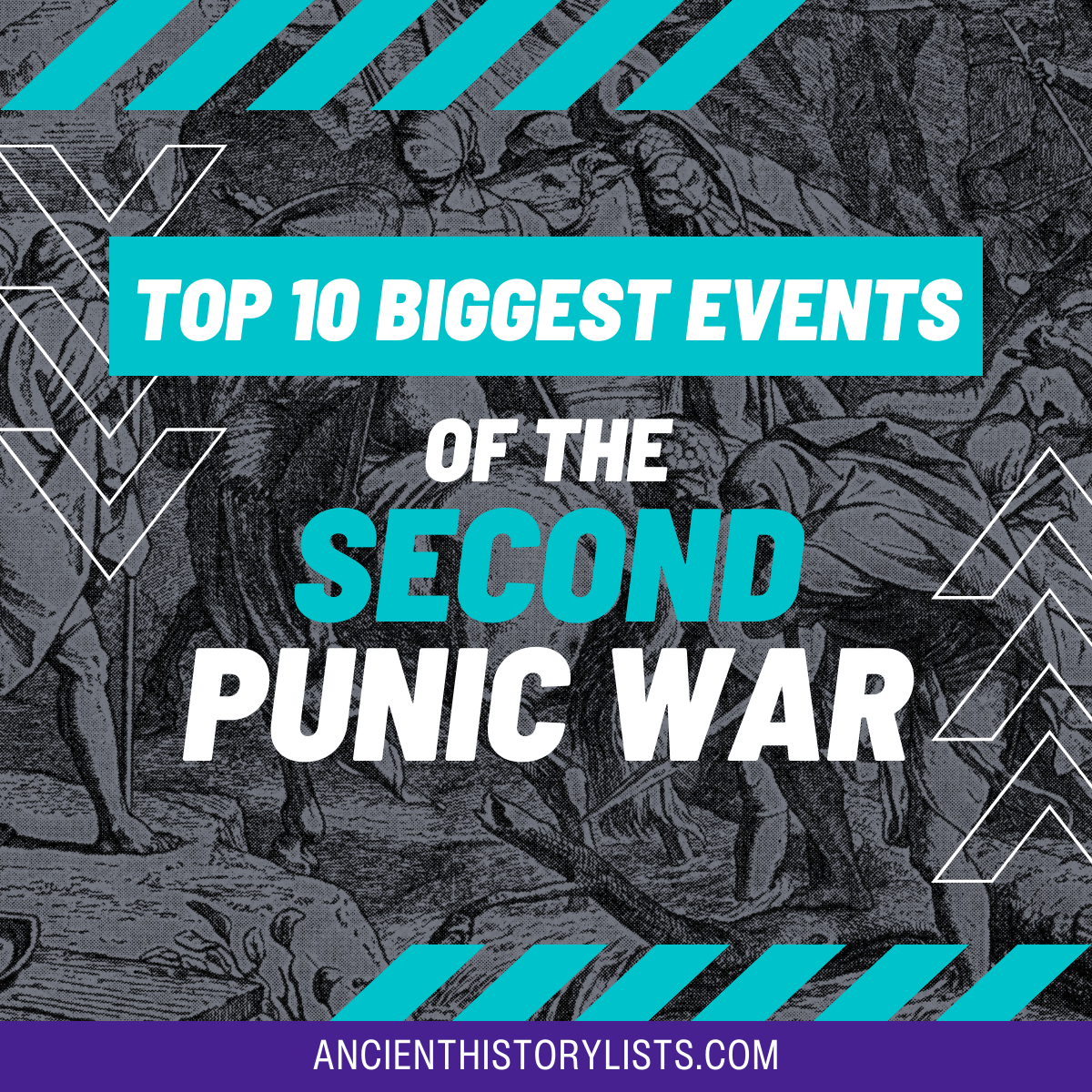
Here is a list of the top 10 biggest events of the Second Punic War:
10. Gallic Uprisings
At a time when Hannibal was marching unfathomable distances with his infantry, cavalry and war elephants, the Romans were also facing a stiff uprising among the Gallic tribes, further worsening the situation for them.
The Gallic population mainly constituted of the Boii and Insubres. These two had previously established diplomatic relations with the Carthaginians. Even though these tribes despised the Romans, they were never able to do much about it because of their limited power.
But when the Carthaginians started their campaign against ancient Rome, the Gallic tribes readily struck an alliance with them to fight the Romans at the front. They started by occupying the Roman colonies of Placentia and Cremona.
Soon, the entire north of Italy was declared insurgent, with both Gallic and Ligurian troops bolstering Hannibal’s army by an additional 40,000 men.
9. Hannibal’s Crossing of the Alps
Without a doubt one of the biggest events during the Second Punic War was when Hannibal crossed the Alps to catch the Romans off guard. In fact, Hannibal’s route across the Alps has been a matter of debate among historians with many of them having their own opinions on the matter. Regardless, the march of Hannibal and his army is the stuff of legend to this day.
Hannibal had always been well informed of the situation in Rome, fed with secret information by his Gallic spies all over Rome. He soon decided on the most opportune time to pull off a surprise attack and started his army’s march across the Alps, which were sparsely populated at the time.
From the Siege of Saguntum to the march through the Pyrenees and the Rhone and then the death-defying ascent and descent on the Alps, Hannibal’s crossing was one of the major achievements of the Second Punic War, and one of the most celebrated achievements of any military force in ancient warfare.
8. Extensive Use of Intelligence
Throughout the conflict, intelligence played a pivotal role in shaping the direction the war took. With the unprecedented support he received from his Gallic allies, Hannibal was always fed with important information about the goings-on in Rome.
In fact, Hannibal had an intelligence service that led to some of his most outstanding victories. He had spies all over Rome; they had even infiltrated the Roman Senate.
The famous Roman general, Scipio Africanus, took a leaf out of Hannibal’s book to strengthen Roman intelligence. His major victories that came later in the war were entirely dependent on intelligence information. When spies were caught, they would be punished harshly.
The same happened to a Carthaginian spy in Rome, who might as well have been a Roman citizen. He got caught and had his hands cut off as a punishment.
7. Battle of Trebia (218 BC)
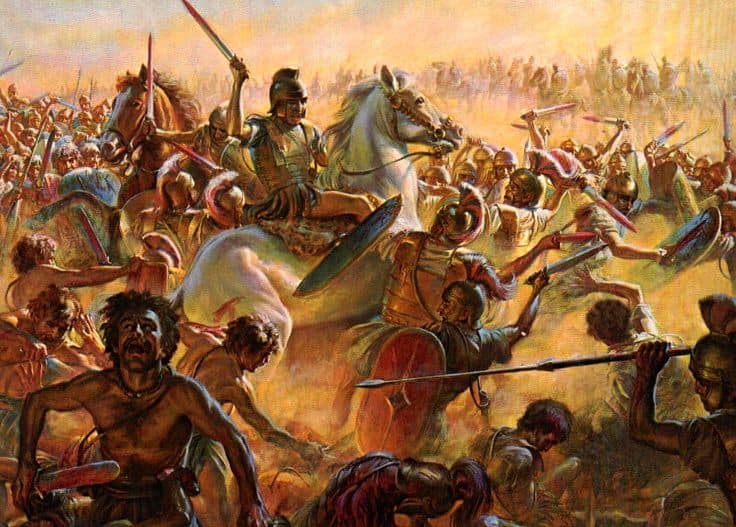
Fought in Italy in 218 BC, the Battle of Trebia was a major battle between the Carthaginians led by Hannibal and the Roman military under Sempronius Longus. Earlier, the Carthaginians had smartly captured a supply depot to serve as a diversion, luring the Romans into battle at the Trebia. They were drawn into battle after an exhausting journey with no food, the result being that most of them were unable to put up a good fight.
Sempronius Longus’ 40,000 infantry positioned themselves in a triple line with 4,000 cavalry on the side. Hannibal, on the other hand, had a mixture of African, Celtic, and Spanish infantry, 10,000 cavalry, and his notoriously efficient war elephants at the front.
Hannibal’s cavalry broke through the smaller numbers of the enemy and then attacked the bulk of the Romans from the front and sides. To further reinforce the Carthaginian attack, the Romans were also attacked at the rear by a hidden detachment led by Hannibal’s younger brother.
All in all, the Romans suffered heavy losses with only 20,000 men out of 40,000 able to retreat to safety.
6. Battle of Lake Trasimene (217 BC)
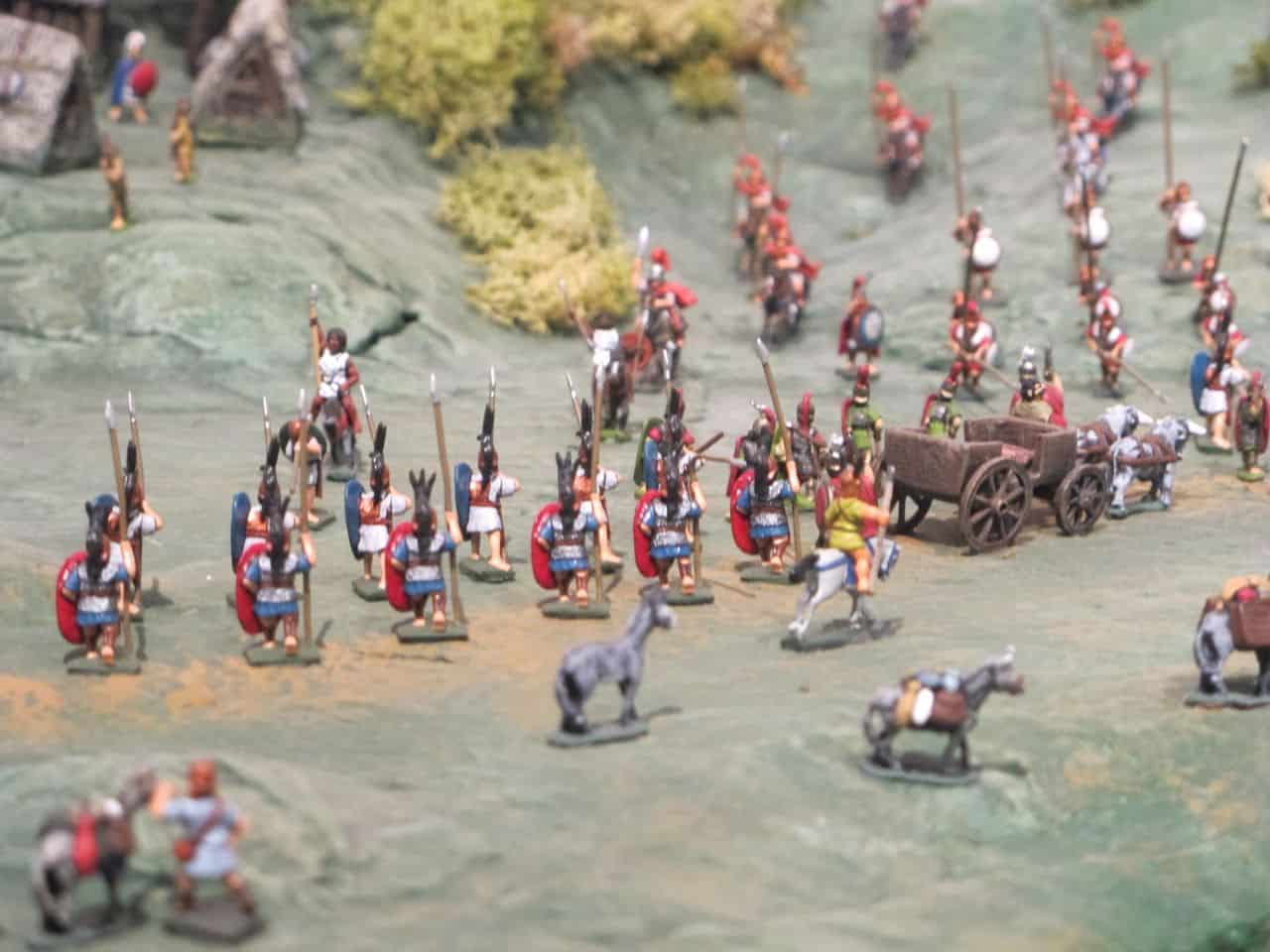
After repeated failed attempts at luring the Roman army under Flaminius on to the battlefield, Hannibal came up with a new strategy and had men marched around the enemy’s flank to cut them off from Rome.
Then by the shore of Lake Trasimene, he was all prepared for the enemy with his ambush. It was a complete success. The battle, which went on to be known as the Battle of Lake Trasimene, saw an effective Carthaginian attack on Roman consul Flaminius and his army of about 25,000 men between the hills at Cortona and Lake Trasimene.
Hannibal dealt a huge blow by decimating most of the Roman army with minimal loss to his side. Roman general Flaminius was also killed in action. Some 6,000 infantry who were able to escape from the battlefield were caught by the Numidians and then forced to lay their arms and surrender.
This defeat had a huge psychological effect on the Romans for it sent ripples of panic through Rome, and they started having doubts about the very future of their city.
5. Battle of Cannae (216 BC)
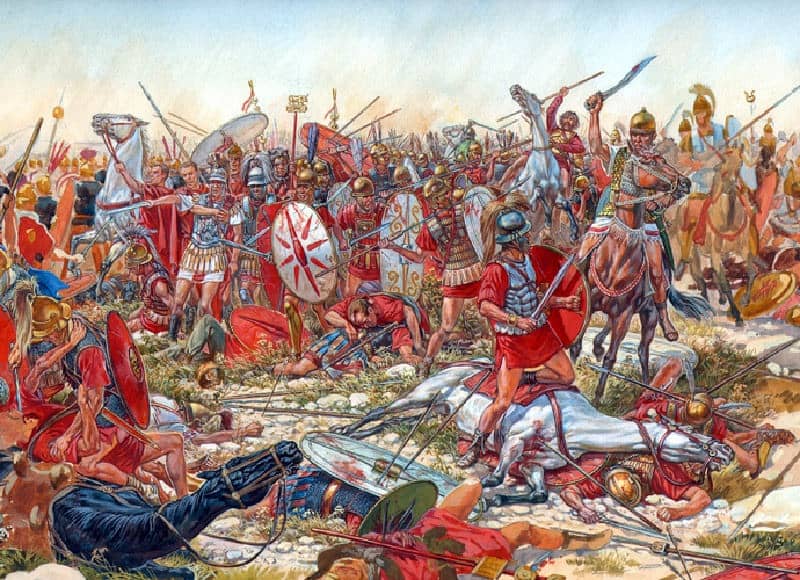
One of the biggest victories for Hannibal and his allies in the Second Punic War was at Cannae on the banks of the Aufidus in 216 BC. The Roman forces were led by consul Lucius Aemilius Paullus.
The Punic allied cavalry attacked the much weaker Roman right wing in the battle, and then raced to the rear line to attack Rome’s Latin allies from behind, who were already engaged with Hannibal’s Numidian horse cavalry.
Historians say that at the end of the battle, 45,500 Roman infantry along with 2,700 cavalry had died, with additional numbers taken prisoner.
This result sent chills of doubt through Rome and its allies and boosted the confidence of the Carthaginians and other rival tribes. Polybius even noted: “How much more serious was the defeat of Cannae than those which preceded it can be seen by the behavior of Rome’s allies; before that fateful day, their loyalty remained unshaken, now it began to waver for the simple reason that they despaired of Roman power.”
4. Fabian Strategy
Two huge defeats at the hands of the Carthaginians rang an alarm bell among the Romans, and they decided it was time for immediate emergency action to ward off any further loss to the state. So Quintus Fabius Maximus was appointed as the temporary dictator cum commander-in-chief. To fight off Hannibal’s so far successful tactics on the battlefield, the Romans deployed the Fabian strategy – they did not engage in open battle with the opponent, but dueled on repeated occasions using smaller detachments.
This rather cowardly act was of course not so popular among the Roman soldiers who gave Fabius the nickname of Cunctator which meant “delayer” since he seemed to avoid battle at a time when Italy was being beaten by its enemies. But this turned out to be a masterstroke.
Fabius’ persistent digs at Hannibal’s forces marred the latter’s command abilities and resulted in many prisoners for the Romans. But soon, Fabius became unpopular in Rome since his tactics did not lead to a quick end to the war and he was removed from his post in the 216 BC election.
3. Battle of Zama (202 BC)
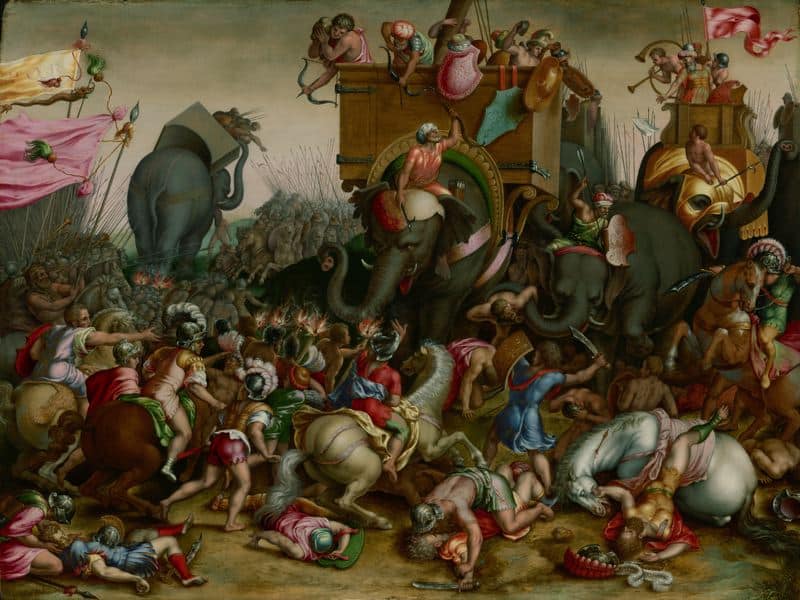
By 206 BC, the war had reached a decisive point. The Roman military under Scipio had learned many lessons from Hannibal’s tactics and were ready to outwit and beat the Carthaginians in the final showdown. The biggest boost to the Romans was the support of the Massyli tribe, which had originally fought along with the Carthaginians but sided with the Romans after the Battle of Ilipa. Their support at the battle of Zama proved most pivotal to Roman success.
Unlike most of the battles of the Second Punic War, the Romans fared better with cavalry and the Carthaginians had a larger number of infantry. The Roman army constituted a force that was superior both in terms of arms and skill when compared to the Carthaginians.
Hannibal probably knew this, and he was also convinced that his men wouldn’t be able to pierce the Roman defense, so he refused to lead his army into battle. The Battle of Zama became Hannibal’s downfall and dealt a decisive blow to the Carthaginian forces.
2. Rise and Fall of Hannibal
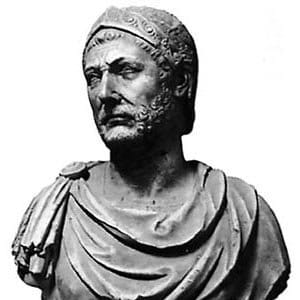
The biggest spectacle of the Second Punic War was the rise of Hannibal as a competent leader and a cunning tactician as well as his eventual fall that became more and more inevitable as the war neared its decisive period. He was little known among the Romans at the beginning of the war, and had he not marched across the Alps – one of the bravest and cunning acts in that war – he may not have been able to deal blow after blow to the Roman defense especially at the beginning. His strategies saw him lure the Romans into traps and beat them at their own game.
But despite this advantage, the Carthaginians could not avoid ultimate defeat. The questions remain to this day: Did Hannibal carelessly squander the power of Carthage? Were the ingenious strategist’s legendary victories also the reason for the downfall of this once incredible empire?
That he refrained from attacking the city of Rome at the height of his successful campaign still surprises historians. Military genius that Hannibal was, he had to face an eventual fall that led to a massive loss for the Carthaginians in the Second Punic War.
1. The Aftermath
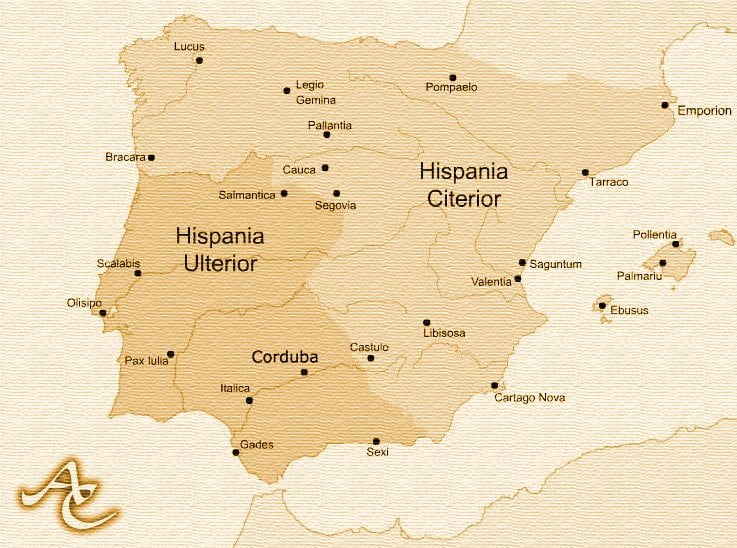
By the end of the war, Hispania was now no longer under Carthaginian rule, and Rome had seized control over a large area that was previously within Carthage. Furthermore, Rome imposed a number of sanctions upon the Carthaginians which prevented them from making any further uprisings.
They imposed a war indemnity on them, limited their navy to 10 ships (those 10 ships were spared so that the Carthaginians could ward off possible pirate attacks) and forbade Carthage from assembling any sort of army without the permission of Rome.
But eventually, Carthage ignored these sanctions and did raise an army about half a century later, which led to the Third Punic War. But without strong leadership and the resources they had in the previous war, Carthage could only put up a fight for a mere three years. The Romans completely destroyed them by 146 BC, thus taking a further step towards ultimate domination of the ancient Mediterranean world.
Conclusion
The Second Punic War was one of the bloodiest wars fought in the ancient world.
Until the decisive moment arrived, the outcome of the war hung in the balance throughout a number of battles. In fact, it would not be an overstatement to say that the Carthaginians were the favorites to win the war from the beginning, only to falter in the later and more decisive stages. The war was the stuff of legend among contemporary historians. So much so that according to Livy, it was “the most memorable of all wars that were ever waged – the war which the Carthaginians, under the leadership of Hannibal, fought with the Roman people.
For never did any state or nation more efficient in their resources engage in contest; nor had they themselves at any other period so great a degree of power and energy. They brought into action too no art of war unknown to each other, but those which had been tried in the First Punic War; and so various was the fortune of the conflict, and so doubtful the victory, that they who conquered were more exposed to danger.”
Dude…. You have missed one crucial battle….battle of the metaurs (207bc) where Hannibal’s brother (hasdrubal) was marching an army of 30,000 plus engine machines to knee Rome . But unfortunately he failed and killed in action .if that army had reached Hannibal,s hands ,it would have changed the course of the war.
Th Battle of Ilipa cannot be overlooked!